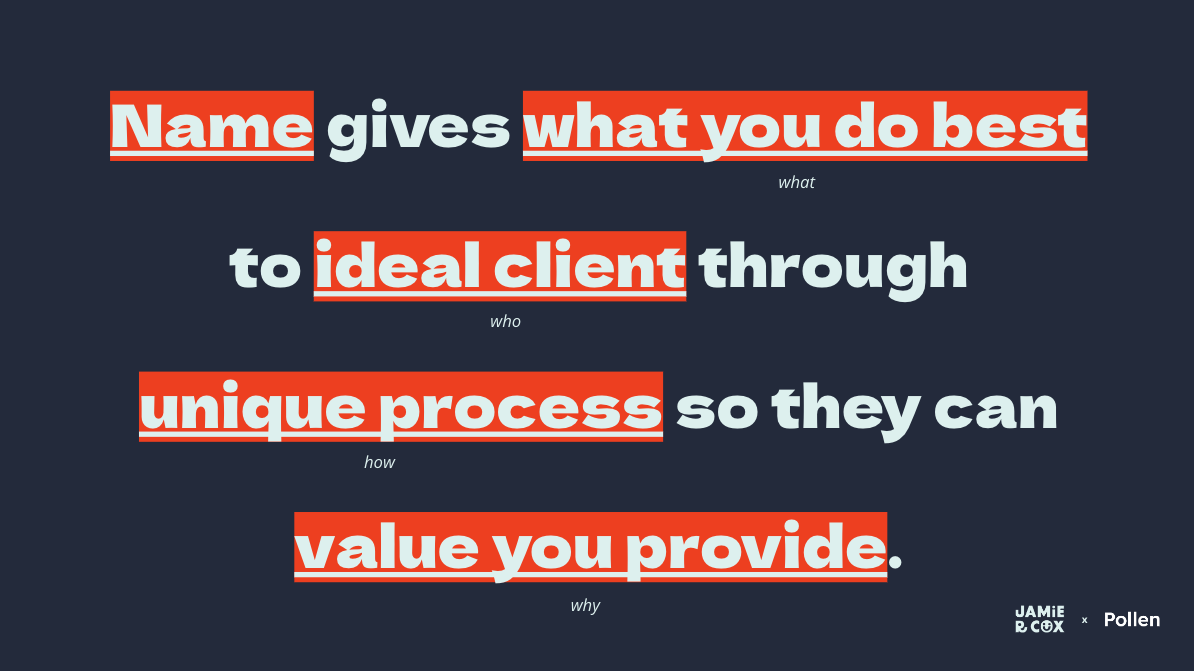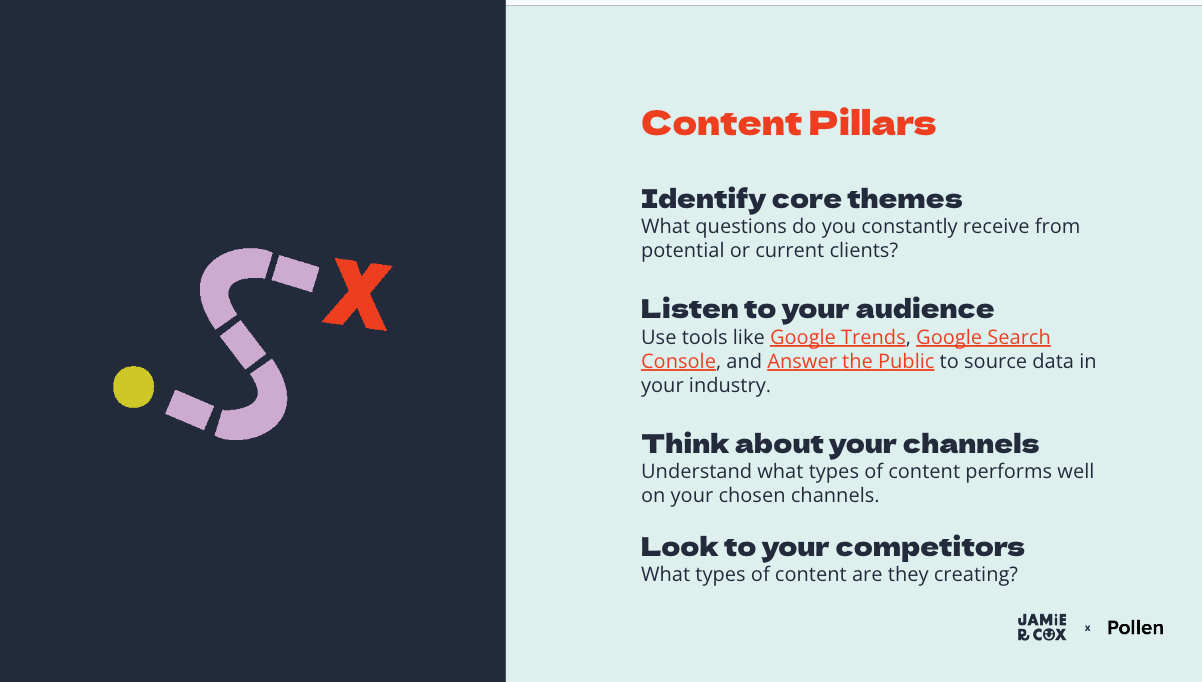Manage Client Expectations with Great SOWs
The SOW is typically attached to the master services agreement (MSA), sometimes called a consulting agreement. The MSA includes terms and conditions for the relationship and work, such as intellectual property agreements, termination clauses, indemnification, and liability. The MSA signed by you and your client remains in place throughout your relationship and can be the standard MSA used with your other clients.
The SOW is specific to the client project or engagement. If you have more than one project with them, you should have more than one signed SOW. The SOW includes scoping, scheduling/timelines, payment terms, communication standards, and everything else specific to this project.
While everything you include in the SOW is essential, here are the two most important concepts from the SOW: It improves client communications and sets boundaries. These benefit you and your client.
Communications: You want clients to know what to expect when working with you. In the SOW:
- Use clear and concise language
- Avoid jargon
- Make it easy for everyone (e.g., non-lawyers) to understand
Boundaries: Setting boundaries helps prevent scope creep and enforces what happens if the client crosses those boundaries. For example, your client needs to approve your draft by a certain date so you can provide the deliverable in a timely manner. The SOW should state what happens with delayed client approval, as your work is contingent on them meeting their deadline.
Clients should understand the reasoning behind the boundaries. They’re more likely to respect and follow them if they know they are dedicating time and other resources to their project. If they don’t meet their responsibility, you may need to pause the project as you have other obligations, and your ability to meet the schedule is contingent on them.
Here are the seven essential sections to address in your SOW.
- What you’ll do
- What you won’t do
- Client obligations
- Schedule and timeline
- Fees and payments
- Background
- Client signature
Include what you’ll do
What is in scope for the project—what will you include, and what will you do? The scoping section eliminates the client's expectation that your services are all-inclusive. Avoid the hourly billing trap by focusing on deliverables rather than time spent. Fixed pricing is better than hourly rates to avoid scope creep.
Depending on your project, here are details you could incorporate:
- Word count: for written projects
- Deliverable format: e.g., PDF, PNG, Word document
- Number of items: e.g., five emails for a marketing series, six logos designs
- Number of revisions included; if needed, describe how extensive each revision can be
- Number of meetings or phone calls included
- When status updates will be sent
- For consulting/coaching: how many sessions, how long each session is, the span of time for sessions (e.g., six sessions over three months)
Include what you won’t do
While this list can’t be exhaustive, focus on common misunderstandings to avoid scope creep. To make it more positive, be specific about what is included (in the first section). So, if you offer two rounds of revisions with the fee and they come back for a third, that is out of scope, but you don’t have to specify it here.
You can sometimes upsell the client by detailing what is out of scope, as clients see things they want and are willing to pay for them. For example:
- Press release placement (when you’re writing the press release)
- Website updates and servicing (when you design or write a website)
- SEO keyword research (when writing content marketing)
- Social media strategy (when writing social media posts)
With a proper SOW, if the client asks you to do something out of scope, you can easily respond with this option: I'd be happy to do that for you. Would you like it to be a fixed fee or an hourly project?
Setting and maintaining boundaries can be difficult and uncomfortable, but by laying them out, you and your clients will be happier knowing the parameters. The more you do it, the easier it gets.
Your work is often contingent on your clients meeting their obligations. If they don’t get information to you, you can’t provide your deliverable. Be specific in these obligations and specify consequences to maintain your relationship if they push back during the engagement. This section can give you the ability to pause your work if they delay what they’re supposed to do. Ensure that if there’s a delay, you communicate with the client what this will mean for the scheduling - don’t just rely on them remembering the SOW.
Here are some typical client obligations:
- The client will respond to your draft within five days
- The client will provide you with the needed information within two days
- The client will provide data in a certain format
- The client will respond to emails or messages within 24 hours
- The contractor will include these Client team members in all communications: X, Y, and Z, and X is the main point of contact
- All client stakeholders must review and sign off on deliverables before the Contractor begins revisions
- Client feedback must be aggregated and sent through 1 point of contact
- The contractor requires a 25% project fee deposit in their account before work begins
It’s not always possible to define a project scope, and that’s why there’s a discovery process. There are different philosophies on whether and when to charge to determine the project scope for the SOW. It’s appropriate to charge or not charge for an initial consult call and SOW development. Some people build it into their project fee later, assuming they get the work.
But if the process is more time-consuming, consider charging for this separately. Scoping exercises help clients even if they don’t ultimately use you, as they help them define the project and align on their end. That’s one reason it’s good for you to charge for it. If they want you to do a lot of work upfront but aren’t willing to pay, they might not value what you do and may not be a good client.
Don't set yourself up for failure by saying, “I have to do it this way.” Be flexible. You can also apply the discovery work to the final project fee if they bring you on for that.
Tip: Use the Discovery Letter Questionnaire when the client’s needs or specifications are uncertain and some research is needed to determine a proper scope and fee.
The background section is optional. However, it can be helpful for the contractor to include what they will do for the client and how it will move the client's goals forward. This can set the stage for the project and ensure the client and contractor are aligned.
Don't rely on an email or text thread to get agreement. Ideally you and the client sign the SOW on paper or electronically.
The SOW is not a proxy for communication. Be sure you talk about it with your clients and that they read and understand it. Don't assume they read it just because they signed it.
Tip: use the Pollen’s custom contracts to get started.
The SOW is typically attached to the master services agreement (MSA), sometimes called a consulting agreement. The MSA includes terms and conditions for the relationship and work, such as intellectual property agreements, termination clauses, indemnification, and liability. The MSA signed by you and your client remains in place throughout your relationship and can be the standard MSA used with your other clients.
The SOW is specific to the client project or engagement. If you have more than one project with them, you should have more than one signed SOW. The SOW includes scoping, scheduling/timelines, payment terms, communication standards, and everything else specific to this project.
While everything you include in the SOW is essential, here are the two most important concepts from the SOW: It improves client communications and sets boundaries. These benefit you and your client.
Communications: You want clients to know what to expect when working with you. In the SOW:
- Use clear and concise language
- Avoid jargon
- Make it easy for everyone (e.g., non-lawyers) to understand
Boundaries: Setting boundaries helps prevent scope creep and enforces what happens if the client crosses those boundaries. For example, your client needs to approve your draft by a certain date so you can provide the deliverable in a timely manner. The SOW should state what happens with delayed client approval, as your work is contingent on them meeting their deadline.
Clients should understand the reasoning behind the boundaries. They’re more likely to respect and follow them if they know they are dedicating time and other resources to their project. If they don’t meet their responsibility, you may need to pause the project as you have other obligations, and your ability to meet the schedule is contingent on them.
Here are the seven essential sections to address in your SOW.
- What you’ll do
- What you won’t do
- Client obligations
- Schedule and timeline
- Fees and payments
- Background
- Client signature
Include what you’ll do
What is in scope for the project—what will you include, and what will you do? The scoping section eliminates the client's expectation that your services are all-inclusive. Avoid the hourly billing trap by focusing on deliverables rather than time spent. Fixed pricing is better than hourly rates to avoid scope creep.
Depending on your project, here are details you could incorporate:
- Word count: for written projects
- Deliverable format: e.g., PDF, PNG, Word document
- Number of items: e.g., five emails for a marketing series, six logos designs
- Number of revisions included; if needed, describe how extensive each revision can be
- Number of meetings or phone calls included
- When status updates will be sent
- For consulting/coaching: how many sessions, how long each session is, the span of time for sessions (e.g., six sessions over three months)
Include what you won’t do
While this list can’t be exhaustive, focus on common misunderstandings to avoid scope creep. To make it more positive, be specific about what is included (in the first section). So, if you offer two rounds of revisions with the fee and they come back for a third, that is out of scope, but you don’t have to specify it here.
You can sometimes upsell the client by detailing what is out of scope, as clients see things they want and are willing to pay for them. For example:
- Press release placement (when you’re writing the press release)
- Website updates and servicing (when you design or write a website)
- SEO keyword research (when writing content marketing)
- Social media strategy (when writing social media posts)
With a proper SOW, if the client asks you to do something out of scope, you can easily respond with this option: I'd be happy to do that for you. Would you like it to be a fixed fee or an hourly project?
Setting and maintaining boundaries can be difficult and uncomfortable, but by laying them out, you and your clients will be happier knowing the parameters. The more you do it, the easier it gets.
Clients may have their own MSA and may require you to sign it. If possible, get an attorney to review the MSA to ensure there’s nothing onerous they’re putting on you. If the terms are acceptable, sign them, and don’t try to make them sign your MSA. Ideally, you can use your MSA instead, as it will be more favorable to you and specific to your situation.
Even if you have to sign their MSA, ask if they will sign your SOW or add your terms to theirs. You may be able to add that you retain portfolio rights, or you can get a kill fee if needed, which may be against their MSA. They should defer to your deliverables and scoping of what is and isn’t included, even if they don’t defer to you for the terms of service in the MSA.
independent consulting business to the next level.






